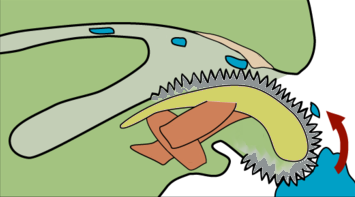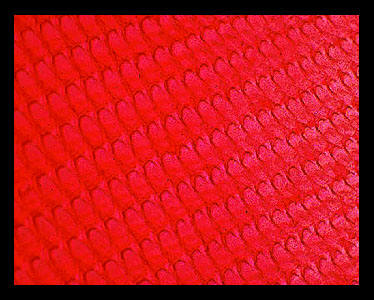Nutrition
Gastropods utilize their radula to eat food. A radula is found inside the mouth, and is like a tongue that is covered in chitonous teeth that rasps any source of food that may be small enough for it to pick up, such as scraping algae (Hickman, 2009).
Above is a diagram of a Gastropod radula.
Above is a microscopic look of a radula.
(photo provided by UW-L Zoo book)
The nutrition of the land snail is quite
interesting for their diet. After a long winter of hibernating,
snails typically like to find a moldy log where there lay all types
of fungus for their food (Blinn, 1963). Within this fungus there
will be different microorganisms ingested that will benefit to the
snails nutrition. The land snails also feed on the living and dead
food for their nutrition that may have decaying tissues (Blinn,
1963).
Fumonelix wetherbyi is found on the side of sandstone outcrops where many different types of soils provide many different sources of nutrients. They may be found in places rich in bat feces, organic matter, or rocky soil (Bennett, 2003).Other animals such as bats, woodrats, and raccoons help bring in and produce organic matter/nutrients to other life forms, including Fumonelix wetherbyi (Bennett, 2003).
To learn about the reproductive system visit
Reproduction.
Fumonelix wetherbyi Home.

